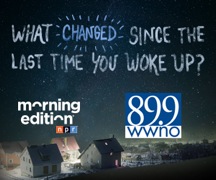The King Monument: Time to revitalize the movement
12th September 2011 · 0 Comments
By Dr. Benjamin F. Chavis, Jr.
NNPA Columnist
The planned dedication and ceremony to formally consecrate the National Memorial Monument of the Reverend Dr. Martin Luther King, Jr. in Washington, D.C. will soon take place after the recent postponement due to the challenging weather conditions resulting from Hurricane Irene. It is not that unusual, however, to now witness a growing chorus of people who are expressing their opinions on the stone structure’s style and architecture, the chiseled inscriptions of King’s quotes, and the overall intended tone that should exude from the moment.
I believe that we all should be very grateful to the Alpha Phi Alpha Fraternity, Inc. and to Harry E. Johnson and the King Memorial Foundation for their outstanding leadership over the many years to bring this significant project to a permanent establishment. Of course, we also have to recognize and thank the King family for their long fortitude and steadfastness of commitment to keep the dream, legacy and spirit of Martin Luther King, Jr. and Coretta Scott King alive and well for millions of people in America and throughout the world.
As a former North Carolina state youth director for Golden Frinks and the Southern Christian Leadership Conference (SCLC) in N.C. in the 1960s under the leadership of Dr. Martin Luther King, Jr., I would like to add just a word to enjoin the current public debate about the King National Memorial. I support the memorial. I believe that this monument in Washington, D.C. will not only stimulate a much needed review and broader comprehension of the leadership of Dr. King, but also even for those who have posited their criticisms concerning some aspects of the King National Memorial, this monument strategically located in the nation’s capital will bring renewed interests and involvement in the ongoing Civil Rights Movement. In other words, we all should be striving today to make sure that the “Monument” reflects and represents the “Movement” not just of the past, but just as importantly the “Movement” today for freedom, justice, equality, jobs and empowerment.
At a time in the United State when we are clearly heading into another difficult national political debate and polarizing crossroads on issues like voting rights, jobs, poverty, racial discrimination, immigration, environmental injustice, disproportionate incarceration, home ownership and land loss, and other severe economic inequalities impacting the African-American community, we need the Civil Rights Movement today just as much as we needed the movement 40 years ago. Again we urgently have to ask, “Where is the Movement today that the King Monument represents?”
In an Op-Ed piece in The New York Times, the renowned scholar Dr. Cornel West emphasized, “King weeps from his grave. He never confused substance with symbolism. He never conflated a flesh and blood sacrifice with a stone and mortar edifice. We rightly celebrate his substance and sacrifice because he loved us all so deeply. Let us not remain satisfied with symbolism because we too often fear the challenge he embraced.” Dr. West affirms the liberation theology of Dr. Martin Luther King, Jr. that necessitated a visible, audacious, challenging, revolutionary, and moral praxis that encouraged a massive and participatory grassroots Civil Rights Movement led in many instances by the Black American church in coalition with many others of conscience and spirit.
We should all recall that at one point in the movement, in spite of differences in ideology, age, class-orientation, political party or other social distinctions, the NAACP, SCLC, National Urban League, CORE, and SNCC all worked together in coalition with others in the Civil Rights Movement in the interests of advancing the cause of freedom, justice, jobs and liberation for all. Today we have more national organizations than we had in the 1950s and 1960s, but Black people in America are less organized and mobilized primarily because we have less unity and sense of purpose among us as a people. In 2008, the election of President Barack H. Obama was an important milestone in the history of our long struggle for freedom. 2008 also witnessed the largest voter turnout of African-American voters in U.S. history. We have to rekindle that kind of voter mobilization across the nation once again. There are efforts in more than 20 states today to repress Black and Latino voter turnout. The forces of reaction and repression are at work to systematically prevent another large Black voter turnout.How is it that there are some who still say “Well, we really don’t need a movement today.” I am hopeful that the dedication of the new National Memorial for Dr. King will at least remind more of us that we still have a lot of work to do. We still have serious civil rights and human rights issues to be addressed and challenged.
In particular, I see so many of our young people who cry out today for a deeper understanding and appreciation for what happened and how it happened 50 and 40 years ago in the movement for change. There is no better way to get that kind of an understanding than to simply join the movement and help to lead our struggle forward. I caution against the rise of cynicism and hopelessness in our community. You can be critical without becoming cynical. Constructive criticism always has its place. But we should not indulge in throwing stones of disunity at each other. Let’s show our love for the love that Dr. King gave to all of us by revitalizing the movement that he led: The Civil Rights Movement. Let’s build and expand the “Movement” that the King “Monument” reflects and represents.
This article was originally published in the September 12, 2011 print edition of The Louisiana Weekly newspaper



